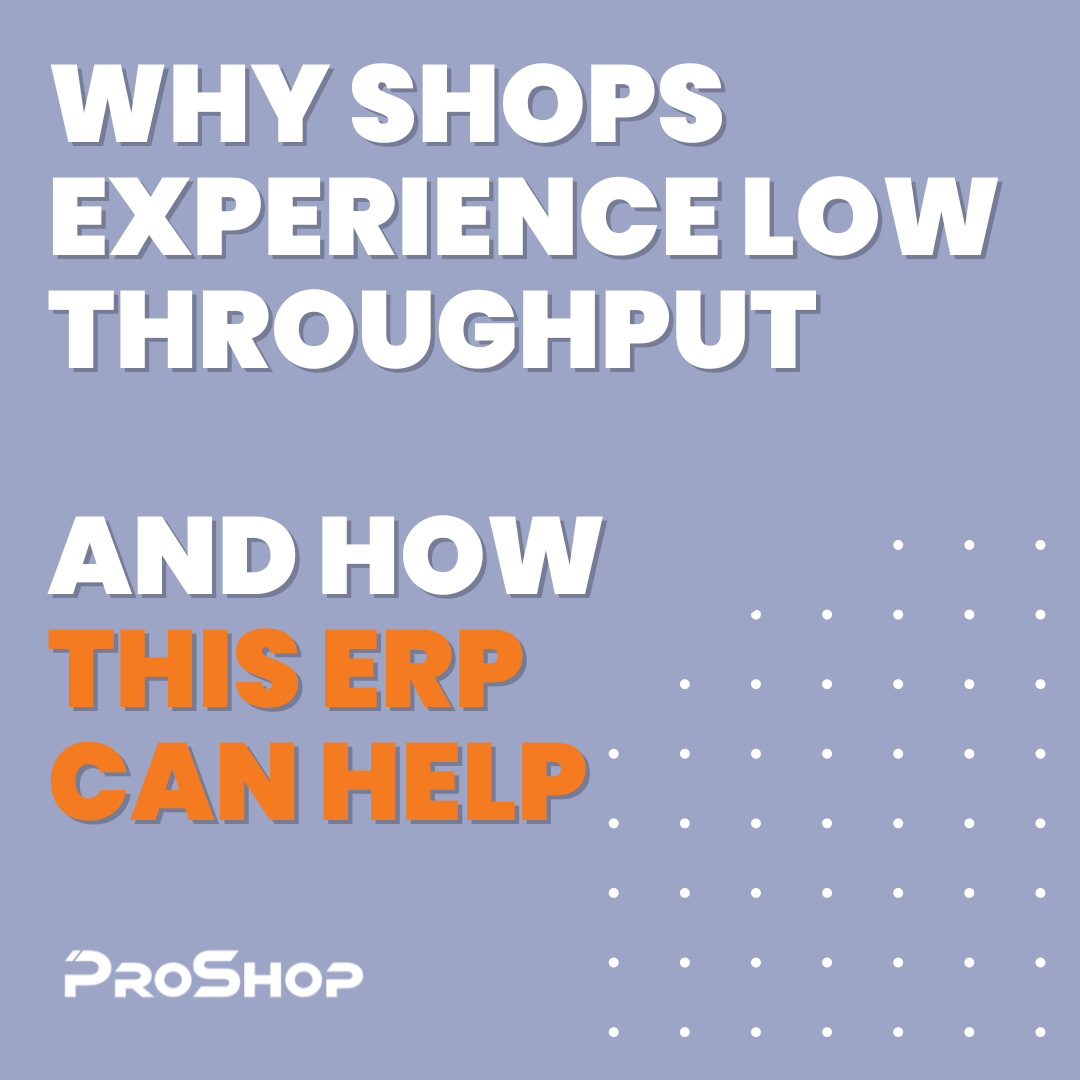Process
& Scheduling
Management
Maintenance
Management
& Inspection
& Material Planning
Financial Data
Management
Written by: Paul Van Metre and David Vuyk
Dale Carnegie was quoted as saying, “An hour of planning can save you 10 hours of doing.” and I believe that can be especially true of procurement planning. It’s not uncommon to forget a material purchase or purchase the wrong tool for a job, resulting in days worth of delays all because of a sloppy process. It might not be obvious at first glance, but procurement might be one of the most impactful functions of machine shop operations. Mistakes made in purchasing could impact profitability, on-time delivery, customer satisfaction, throughput, spindle up-time, and cash flow. This is why having a rock-solid procurement process is so very important.
Challenges pertaining to machine shop procurement are common. It doesn’t matter if you’re working in a large organization with dedicated procurement personnel or a small shop where purchasing is one of your many different hats. When managed well, good procurement practices contribute to your overall success. When managed poorly, it can cause a world of hurt. What kind of hurt? Let’s run through some scenarios:
You could apply those same scenarios to the procurement of tooling and other consumables too. There is no shortage of places where missed details can place a job, or the business as a whole, at risk. That being said, those risks can be mitigated when you embrace a reliable system to simplify your procurement process.
Procurement planning really starts at the estimating stage of the job, where materials pricing, BOM items, outside process, and all other out-of-pocket costs need to be defined and estimated as accurately as possible along with all relevant lead times so that long lead items can be identified and planned for. When done properly, these estimations will set the stage for proper purchasing decisions to be made once the work has been awarded, so long as there is a means of disseminating that information from estimating to the procurement team during the job planning process.
The Pitfalls of Poor Procurement Practices
While there is a substantial list of possible procurement pitfalls, let’s talk about some of the most common ones to look out for. Solving these would be a great place to start if you’re serious about improving things.
1. Reactive purchasing: Reactive and unexpected purchasing is bad for several reasons. For one, you are probably reactively purchasing something because it wasn’t until you were mid-process that you realized you didn’t have what you needed. This means that you are likely already behind the 8-ball and probably paying added fees for expediting in order to minimize lost time. If you find yourself often purchasing reactively, then it’s time to put an end to it. Incorporate some steps into your job planning process whereby a planner reviews all purchasing requirements for tooling, materials, and other consumables like we’ve incorporated into ProShop’s Pre-processing Checklist. This would include a review of existing inventory, and if needed, making a purchase request.

2. Over/under ordering: Ordering the wrong quantity is another common issue. In some cases, over-ordering material can lead to having too much cash tied up in inventoried materials. Under-ordering could mean not having enough quantity to fulfill active customer projects, resulting in missed due dates. This problem usually stems from missing information regarding current inventory levels along with total shop demand for materials based on all active orders. ProShop’s COTS module shows both pieces of information at a glance and ProShop’s cart purchasing system allows purchasers to see economic order quantities, total demand, and current inventory levels so that an informed decision can be made when issuing the PO. ProShop’s BOM management functionality similarly allows you to quickly and easily evaluate current inventory levels of BOM items so that allocation from inventory or a purchase request can be easily made.
3. Lack of visibility: Procurement issues can also stem from a lack of visibility regarding what needs to be purchased for certain projects, what the status is of outstanding vendor purchase orders, and which open purchase orders are time sensitive. Knowing this information allows you to act quickly where needed such as following up with a vendor about late vendor orders that are needed for critical jobs. In ProShop, we’ve solved this issue by leveraging a centralized purchasing dashboard where all purchase requests are summarized and categorized by type of purchase. This allows the purchaser to have a singular point of focus for all the purchasing needs of the organization. From here, purchase orders can be processed individually, or in bulk. ProShop’s receiving dashboard and watch lists for late vendor purchase orders provides instant visibility regarding critical items needed for jobs and when they can be expected to arrive.

Procurement and the bigger picture:
Approaching your purchasing needs with a spirit of “We’ll figure it out later” will only lead to increased frustration and decreased job performance. ProShop’s procurement and job planning tools help to facilitate procurement processes that increase business performance. That means having exactly what you need when needed, minimizing excess inventory, experiencing improved cash flow, and increased profit margins! Avoiding the pitfalls listed above will increase your rate of success while minimizing the wastes that result from poor procurement practices.
What kind of waste? In a recent case study with East Branch Engineering and Manufacturing, Chris estimates that within a year of implementing ProShop, he had realized a $20,000 reduction and expediting fees and $12,000 reduction in shipping fees because of ProShop’s job planning and procurement tools. Better visibility and job planning means no more frantic expedited orders due to overlooked details.
Tools that support proper procurement processes are another component of operational excellence that we’ve baked into ProShop ERP. If you’re ready to reduce frustration and increase the performance of your manufacturing business, get in touch today to learn how we can help!


